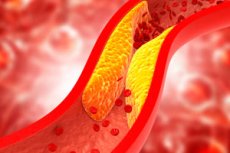Nye publikasjoner
Trombektomi gir bedre resultater ved akutt hjerneslag og større infarkter
Sist anmeldt: 02.07.2025

Alt iLive-innhold blir gjennomgått med medisin eller faktisk kontrollert for å sikre så mye faktuell nøyaktighet som mulig.
Vi har strenge retningslinjer for innkjøp og kun kobling til anerkjente medieområder, akademiske forskningsinstitusjoner og, når det er mulig, medisinsk peer-evaluerte studier. Merk at tallene i parenteser ([1], [2], etc.) er klikkbare koblinger til disse studiene.
Hvis du føler at noe av innholdet vårt er unøyaktig, utdatert eller ellers tvilsomt, velg det og trykk Ctrl + Enter.

Hos pasienter med akutt hjerneslag og stort infarkt gir trombektomi kombinert med medisinsk behandling bedre funksjonelle utfall og redusert dødelighet, ifølge en studie publisert i New England Journal of Medicine.
Vincent Kostala, MD, PhD, fra Guy de Chauliac Hospital i Montpellier, Frankrike, og kolleger tildelte pasienter med okklusjon av proksimal fremre sirkulasjon i hjernen og et stort infarkt påvist ved magnetisk resonansavbildning eller computertomografi innen 6,5 timer etter symptomdebut endovaskulær trombektomi og medisinsk behandling (trombektomigruppe; 166 pasienter) eller kun medisinsk behandling (kontrollgruppe; 167 pasienter).
På grunn av lignende studieresultater som favoriserte trombektomi, ble studien stoppet tidlig. Forskerne fant at omtrent 35 prosent av pasientene fikk trombolytisk behandling. Median modifisert Rankin Scale-skåre etter 90 dager var 4 i trombektomigruppen og 6 i kontrollgruppen (total odds ratio, 1,63; 95 prosent konfidensintervall, 1,29–2,06).
Etter 90 dager var totaldødeligheten 36,1 % i trombektomigruppen og 55,5 % i kontrollgruppen (justert relativ risiko, 0,65; 95 % konfidensintervall, 0,50–0,84); andelen pasienter med symptomatisk intrakraniell blødning var henholdsvis 9,6 % og 5,7 % (justert relativ risiko, 1,73; 95 % konfidensintervall, 0,78–4,68).
«Bruk av trombektomi i kombinasjon med medisinsk behandling innen syv timer etter symptomdebut resulterte i en lavere modifisert Rankin Scale-skåre 90 dager etter randomisering enn medisinsk behandling alene», skriver forfatterne.
Studien ble støttet av Montpellier universitetssykehus gjennom et ubegrenset tilskudd fra et konsortium av medisinske selskaper (Medtronic, Stryker, Balt Extrusion, MicroVention og Cerenovus).
